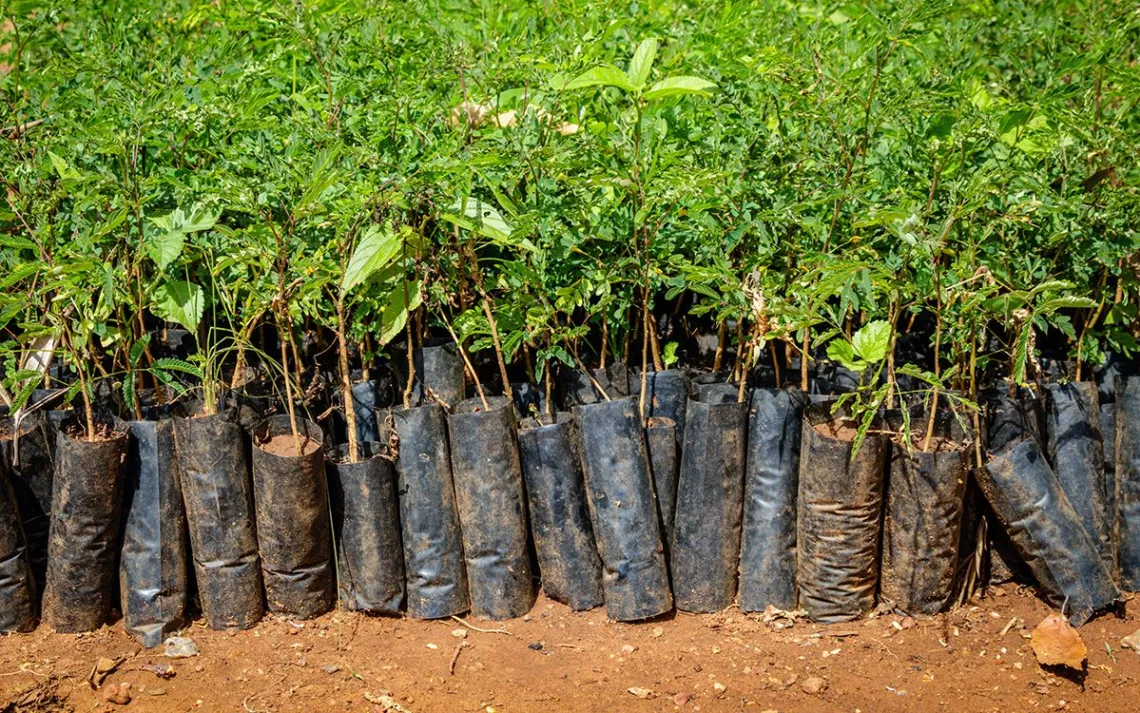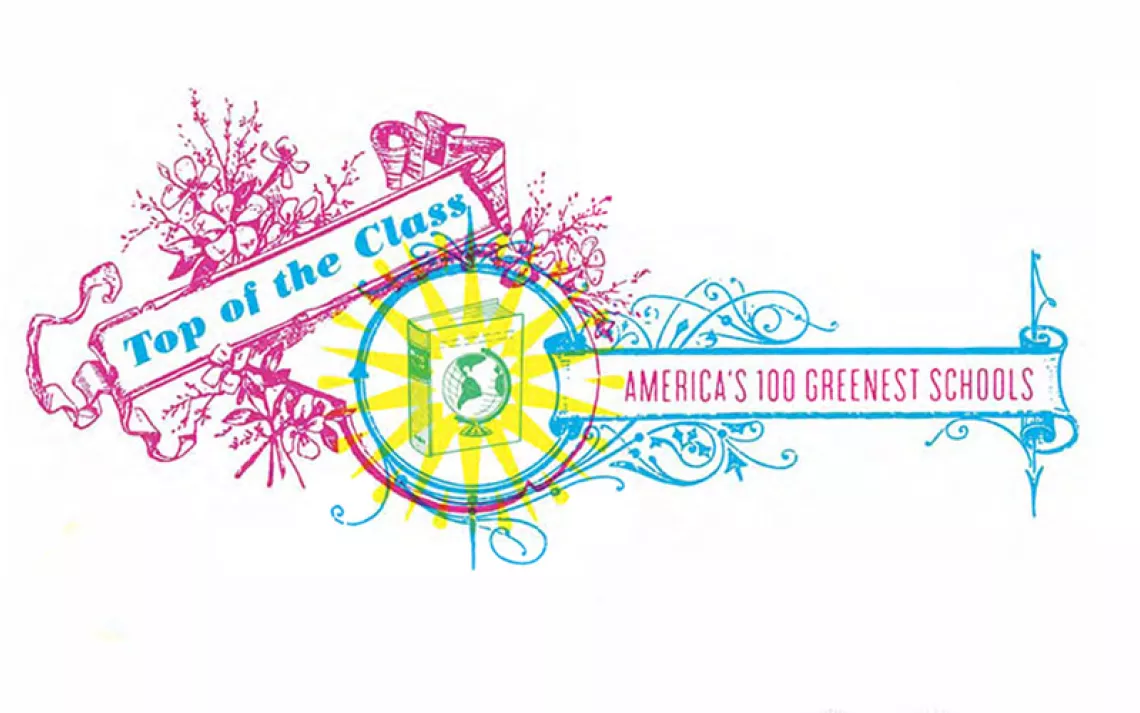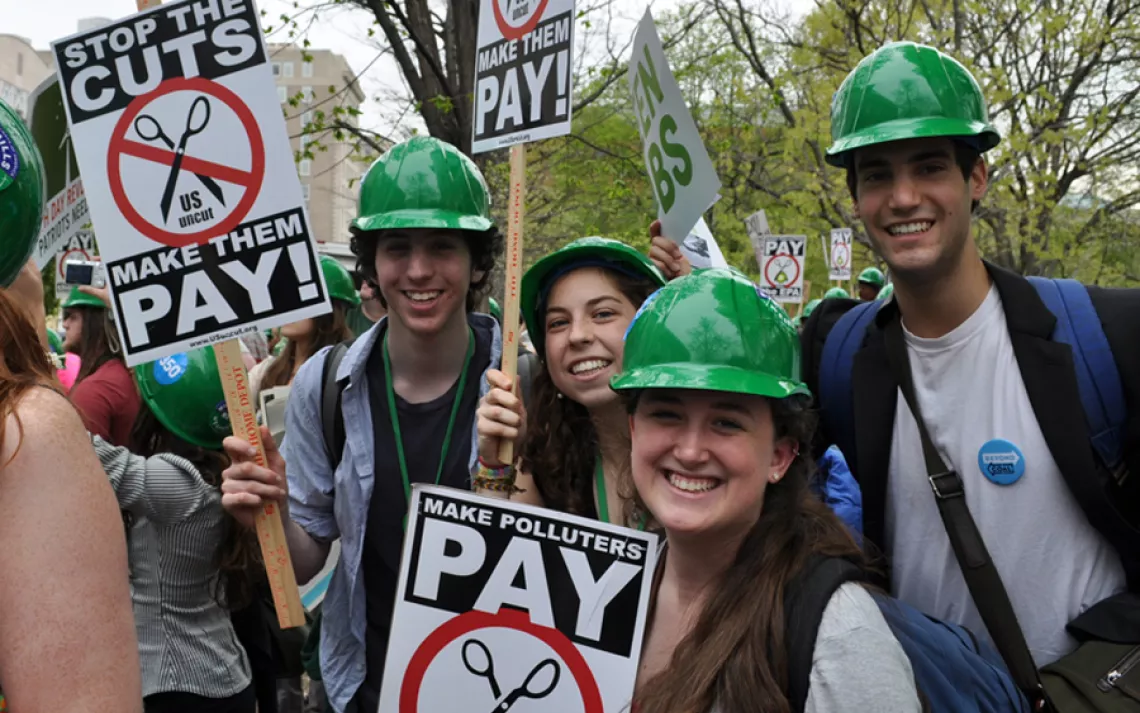Inside Schools’ Race to Carbon-Neutrality
Universities can’t yet reach carbon-zero, so some buy the title “carbon-neutral”
American universities' race to become “carbon-neutral” is on. From Arizona State University to American University, schools east and west are claiming their campuses are carbon-neutral—that’s what you get to call yourself when you release net-zero carbon dioxide emissions.
But the thing is, the vast majority of these carbon-neutral schools still emit carbon for what climate change policymakers call scope one and scope two emissions. Scope one emissions account for direct emissions from an institution’s broilers, furnaces, company vehicles, for example. Scope two are the indirect emissions that typically come from purchased electricity, heating, and cooling. Scope three emissions are also indirect but further removed than scope two. Think airplane travel, investments, and whatever emissions come from sold products at the end of their lives.
That’s where purchased carbon offsets—to help fund carbon-storing endeavors like land restoration—come in. The idea is that offsets compensate for those emissions an entity continues to generate; in other words, equilibrium is achieved through penance. And climate penance, not unlike old-world Catholic dispensations from sin, can simply be bought.
The term “carbon-neutrality” is being increasingly sought after by not only universities but also small start-ups and global corporations and organizations (arguably for marketing purposes). Frequently, an organization simply tallies its emissions and then finds an offset organization that claims to sequester that precise amount of carbon. A common example of offsets in higher education would be found in a college paying a wind farm to generate renewable energy, so as to balance greenhouse gases from the college’s buildings or transportation fleet. Or, that same school could pay a nonprofit to plant however many trees would sequester the amount of carbon that the school emits.
While offsets can be a useful tool toward building a more sustainable organization, they’re tricky because, after all, emitting carbon is, well, still emitting carbon. And until schools make more serious commitments to clean energy and prioritize innovation toward cleaner infrastructure and transportation, many sustainability experts say they can’t accurately call themselves carbon-neutral—and definitely not carbon-zero. (While carbon-neutral refers to balancing out the total amount of carbon emissions, net-zero carbon, or “carbon-zero,” implies that no carbon was emitted from the get-go.)
“It’s complicated,” says Steve Muzzy, senior climate programs manager for Second Nature, a nonprofit that works with schools to commit to and accelerate climate goals. Muzzy believes offsets are a market solution and thus deserving of skepticism. “Large investment can potentially drive change, not claiming all offsets are created equal. But I think people just need to understand the complexity and do their own investigation and research into what a carbon offset is.” By which Muzzy means, not just picking the cheapest offsets on the market and calling it a day.
In Muzzy’s book, vetted, verified local offset projects are the ones schools should turn to, if indeed any, he told Sierra. The Offset Network, made up of higher-education-related organizations, including Second Nature, has for the past few years been trying to facilitate just that. The Offset Network supports offset projects that also provide educational opportunities for students and faculty. That’s because local offset projects are easier to track, results-wise. Take Arizona State University’s urban forestry and carbon offsets program, in which ASU partnered with the cities of Phoenix and Tempe to plant 359 trees at 15 sites (for its first project), with help from students and community members. The university has a private company, Urban Offsets, that manages project data and certifies offsets generated by the program. Around 1,200 metric tons of CO2 are expected to be sequestered by the time the trees reach full maturity.
More often, though, schools take on projects abroad because creating local projects from scratch can be too expensive. Traditional offset projects are employed by Colgate University, which is in collaboration with a company to plant 225,000 native trees on 430 acres of degraded land in Patagonia. The University of Florida also uses more traditional offsets; commuter employees there have agreed to funnel a certain amount of every paycheck to an outside company to offset their commuting emissions.
While these projects can sound like an easy win for the school in the sustainability realm, offset decisions should always be regarded with scrutiny, because, as Muzzy puts it, "No two offsets are alike."
And while schools increasingly describe themselves as “carbon-neutral,” that’s typically a self-christened title. The Association for the Advancement of Sustainability in Higher Education (AASHE) helps schools take inventory of and improve their sustainability measures (Sierra works closely with AASHE to develop its annual Cool Schools rankings). Similar to Second Nature, AASHE had a hand in creating the American College & University Presidents’ Climate Commitments in 2006, as did Second Nature. This document’s carbon-neutrality commitment, Muzzy says, is the longest-serving voluntary carbon-neutrality initiative in existence.

Sign up to receive Sierra News & Views
Get articles like this one sent directly to your inbox weekly.
With this action you affirm you want to receive Sierra Club communications and may vote on policy designated by the Sierra Club Board.
AASHE provides a standardized way for universities to self-report their sustainability measures (and thus be publicly categorized according to their eco bona fides), and it allows institutions to calculate third-party verified carbon offsets and institution-catalyzed carbon offsets against their direct emissions. This is the case, AASHE’s director of programs, Julian Dautremont-Smith, says, because of the fact that it’s difficult, if not impossible, for many universities to achieve carbon-neutrality, even for scope one and two emissions alone. The organization has not developed a formal definition of carbon-neutrality and does not itself label institutions as carbon-neutral, he told Sierra.
However, not all schools are setting carbon-neutrality goals that allow for the inclusion of offsets. Some universities’ climate action plans spell out that they’re a last resort. Climate scientist Anji Seth, chair of the University of Connecticut’s Atmospheric Sciences Group, told Sierra about her school’s zero-carbon plan—one that plans for neutrality sans carbon offsets for scope one and two emissions.
That stipulation, Seth says, had a lot to do with pressure from students. In fall 2019, more than 1,000 UConn students participated in a climate strike as part of the international Fridays for Future movement. They demanded university action—this included a stop to all new fossil fuel infrastructure on campus and devising a plan to achieve zero-carbon by 2040. Following a climate emergency resolution, UConn’s student government voiced support for the same demands. Following the first strike, students held weekly sit-ins outside the university administrative offices.
“Student activism is very important,” Seth says, explaining that students straight-up demanded a university-wide carbon-zero movement. If they hadn’t, Seth says, getting the administration and operations staff on board with no carbon offsets might’ve been a challenge. Operations staff, overall, wanted to continue purchasing a small amount of offsets—but the students argued that was not an “acceptable solution,” Seth says. After about a year and a half, UConn last spring released a detailed plan to reach carbon-neutrality by 2040.
While carbon offsets can certainly be seen as worthy additions to an organization’s sustainability agenda, “the emphasis needs to be on real reductions,” Seth says. Offsets should be a kind of “last resort,” she adds. After all, they’re how UConn will continue to mitigate scope three emissions. “We don't have electric planes yet,” Seth explains. “Maybe at some point we will, so until then, the two things you can do are fly less or offset.”
 The Magazine of The Sierra Club
The Magazine of The Sierra Club




